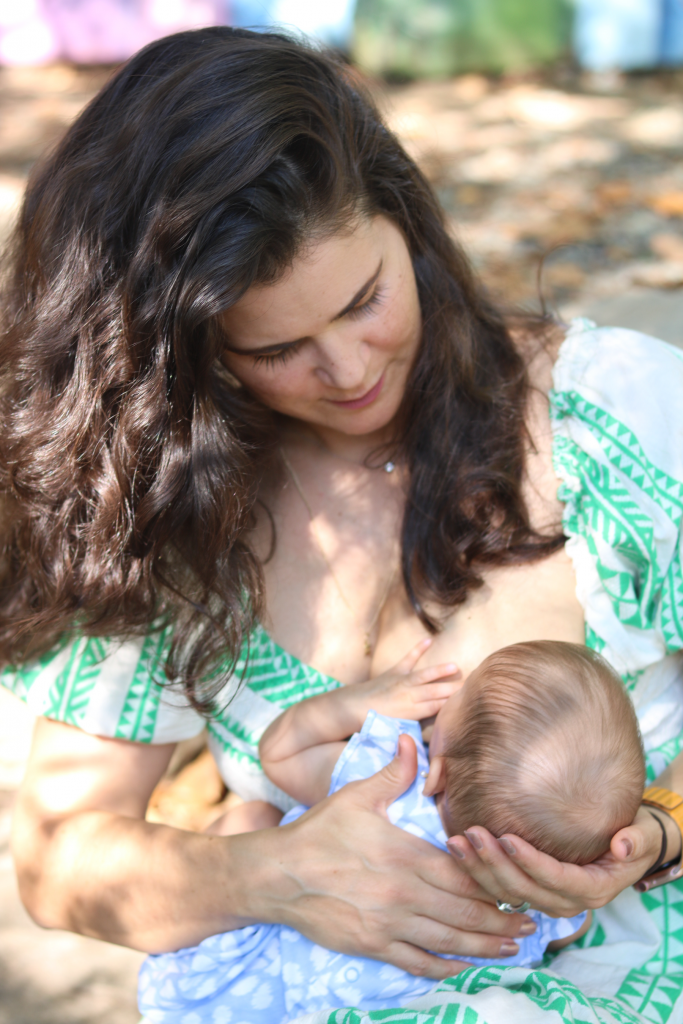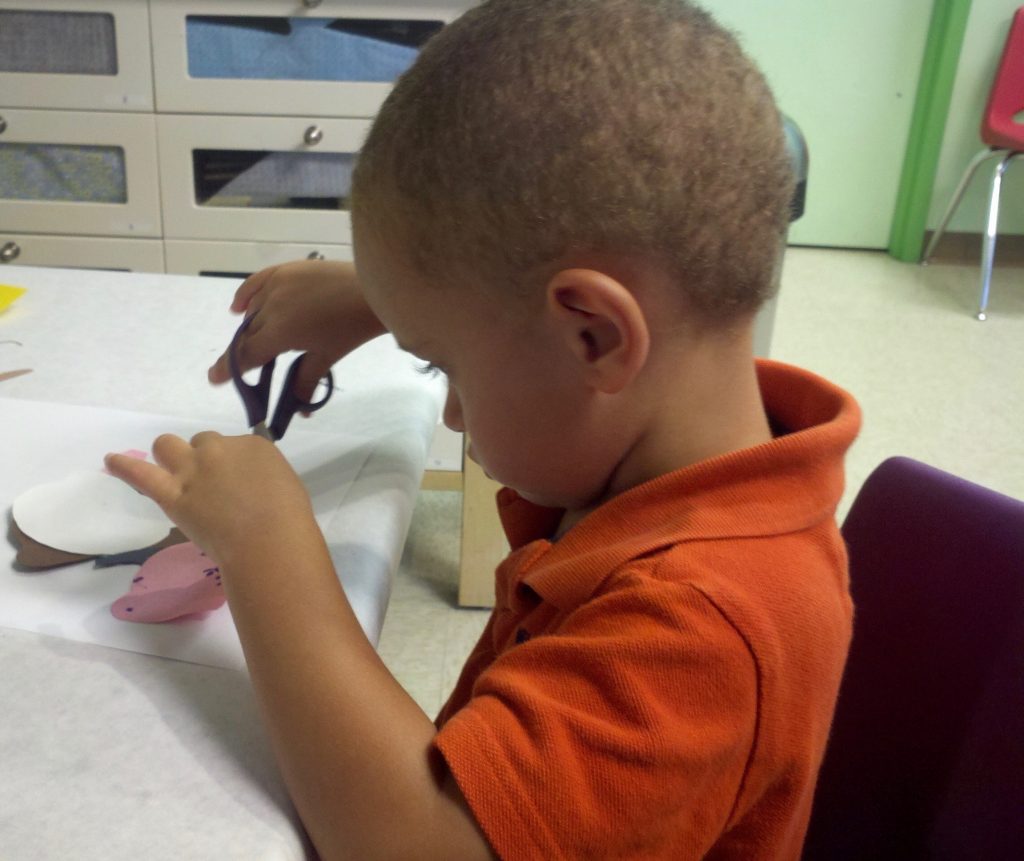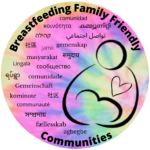This April 2-8, 2022, marked the 51st year that the National Association for the Education of Young Children (NAEYC) has celebrated the Week of the Young Child (#WOYC). The NAEYC sets aside this important time for advocacy and awareness-building of the need for high-quality affordable childcare. It is a celebration of “early learning, young children, their teachers, and families.” #WOYC draws attention to the needs of young children and their families and recognizes “the early childhood programs and services that meet those needs.”

In the spirit of the #WOYC, we offer a program that meets the needs of young children and their families and has a profound impact on early learning – Breastfeeding Friendly Child Care.
Families are their children’s first teachers. Parents are teaching their children from birth, nourishing and nurturing their children’s physical growth and cognitive and social-emotional development through the important early learning tool – chest/breastfeeding. Yet, children who are routinely cared for by someone other than their parents are less likely to be chest/breastfed, and many parents will stop nursing their children earlier than they had hoped because they need to return to work or school. A Breastfeeding Friendly Child Care program welcomes and encourages families to continue to nurse and/or provide human milk for the health and well-being of their children.
Let’s take a closer look at the connection between early childhood learning and breastfeeding; how a Breastfeeding Friendly Child Care supports this important early learning tool; and what is included in a Breastfeeding Friendly Child Care program.
- An Essential Part of the Early Childhood Learning Model
- More Than Just the Components in Human Milk
- The Breastfeeding Friendly Child Care Program
- Resources
- Call To Action
- References
As the norm for infant feeding, chest/breastfeeding provides the foundation from which optimal physical, cognitive, and social-emotional development thrives.

An Essential Part of the Early Childhood Learning Model
Physical development is a good place to start. For some, chest/breastfeeding is only about providing a food source to meet the physical development of a child, and indeed, human milk is designed to best meet the nutritional needs of the growing child. Human milk provides a unique combination of nutrients (proteins, fats, vitamins, and carbohydrates) and non-nutrient components (e.g., growth factors, hormones, digestive enzymes) that are easily digested and absorbed and that continuously change to meet the growing needs of a child.
Human milk does so much more. It helps to build and support the child’s immune system, which impacts not only the child’s health but the health of the childcare classroom. A baby’s immature immune system relies on the antibodies received while chest/breastfeeding, antibodies that are made by the parent in response to the pathogens (germs) to which the baby and parent have been exposed. The antibodies in human milk help to protect the baby from illness. Children who are breastfed have fewer ear infections and gastrointestinal infections, illnesses which can be common in a childcare environment.
Chest/breastfeeding positively impacts cognitive growth. During the formative years in childcare, the brain grows quickly. It doubles in size in the first year and keeps growing to about 80% of adult size by age 3 and 90% by age 5. Human milk supports this rapid brain development. In addition, it contains naturally occurring long-chain polyunsaturated fatty acids (DHA and ARA) for improved cognitive and intellectual functioning. Both DHA and ARA are present in the right proportions in human milk for optimal development. Interestingly, although DHA and ARA have been added to some infant formulas, they do not provide the same beneficial results as in human milk.
More Than Just the Components in Human Milk
Both research and the experiences of families teach us that the benefits of chest/breastfeeding are more than the sum of the nutritional, non-nutritional, and immunological components of human milk. Nursing builds a relationship that supports social-emotional development. It is a time of holding, closeness, touch and warmth, and those aspects play a vital role in cognitive and social-emotional development. Social-emotional development also is enhanced by the presence of oxytocin, which is available in human milk and is further released during chest/breastfeeding through suckling and touch. Oxytocin lowers infant stress levels, opening the way for improved social-emotional development.
The Breastfeeding Friendly Child Care Program
Supporting families to continue to chest/breastfeed and provide human milk for their children helps to reduce illnesses, promotes a healthier environment for children and staff, supports optimal cognitive development, reduces stress for the child, and fosters increased social-emotional development. However, many child care providers and caregivers find it challenging to support their lactating families, as well as their staff.
Breastfeeding Friendly Child Care is a program designed to help childcare providers welcome and meet the needs of lactating families. It provides the resources and tools for childcare providers and caregivers to create a welcoming and supportive environment for families and staff to continue to breastfeed, chestfeed, and provide human milk for their children even after returning to work or school.
While each child care program is unique, there are a number of important components in a breastfeeding friendly child care program, including:
- Written Policy
- Maintaining a written lactation policy for families and for staff.
- Sharing the policy regularly with families.
- Professional Development
- Providing annual training to promote breastfeeding and support family feeding decisions.
- Community Connections
- Offering breastfeeding resources and information to support families
- Maintaining a list of local lactation support providers and updating it annually.
- Supportive environment
- Allowing parents to breastfeed anywhere that they feel comfortable
- Providing a private space for parents and staff who would like privacy for feeding or expressing their milk.
- Maintaining feeding plans for infants that promotes exclusive breastfeeding in the first six months of life and supports families’ feeding goals.
- Curriculum to normalize chest/breastfeeding:
- Providing interactive and developmentally appropriate learning and play opportunities that normalize chest/breastfeeding (e.g., books with images of nursing).
- Welcoming parents into the classroom to nurse their children.
Resources
Learn more about Breastfeeding Friendly Child Care by checking out the Resources below. Please reach out to the Breastfeeding Family Friendly Communities team, if you have any questions. We also would love to hear from you about additional Breastfeeding Family Friendly resources in your community!
AUSTRALIA
CANADA
USA
Call To Action
Thank you to the NAEYC for the Week of the Child and your work to support the early learning of our youngest community members. We know that the celebration of early learning continues beyond the Week of the Child, and families continue to benefit from chest/breastfeeding friendly policies and practices in early care and education. We urge the NAEYC and all organizations that are committed to optimal infant and young child growth and development to actively promote Breastfeeding Friendly Child Care. Infants, their families, and their early care and education providers depend on your support.
Thank You to the childcare programs that have taken the all-important steps to create breastfeeding family friendly programs for their students and families. And Thank You to lactating families across the globe for your dedication to breastfeeding, chestfeeding, and human milk feeding.
References
- Effect of Breastfeeding Duration on Cognitive Development in Infants
- The Science of Breastfeeding and Brain Development
- Psychological Effects of Breastfeeding on Children and Mothers
- Breastfeeding Benefits Your Baby’s Immune System
- Human Milk and Preterm Infant Brain Development
- Oxytocin Effects in Mothers and Infants During Breastfeeding
